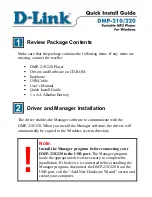
2
24'2#4#6+10
R
#
9#40+0)
#
R
#
Dispose of old batteries promptly and properly.
Do not burn or bury them.
.
"
%#76+10
"
.
• Use only fresh batteries of the required size
and recommended type.
• Do not mix old and new batteries, different
types of batteries (standard, alkaline, or
rechargeable), or rechargeable batteries of
different capacities.
• If you do not plan to use the recorder with
batteries for a month or more, remove the
batteries. Batteries can leak chemicals that
can destroy electronic parts.
You must use a Class 2 power
source that supplies 3V
DC
and delivers at least 400 mA.
Its center tip must be set to
positive and its plug must fit the recorder's
DC 3V jack. Using an adapter that does
not meet these specifications could
damage the recorder or the adapter.
• Always connect the AC or DC adapter to the
recorder before you connect it to AC power
or the power source. When you finish,
disconnect the adapter from AC power or the
power source before you disconnect it from
the recorder.
!
±
"
016'
"
±
"
Connecting Power
Connecting an AC or DC adapter automatically
disconnects internal batteries.
Connecting an Earphone/
External Microphone/
Wrist Strap
• You can also use an earphone during
recording to listen to what the recorder is
picking up through the internal or an external
microphone. (See “Operation” on Page 3)
• Connecting an external microphone
automatically disconnects the built-in
microphone.
• Your local RadioShack store carries a wide
selection of earphones and microphones.
#"
+/2146#06
"#
The EPA certified RBRC®
Battery Recycling Seal on
the nickel-cadmium (Ni-Cd)
battery indicates
RadioShack is voluntarily
participating in an industry
program to collect and
recycle these batteries at the end of their
useful life, when taken out of service in the
United States or Canada. The RBRC program
provides a convenient alter-native to placing
used Ni-Cd batteries into the trash or the
municipal waste stream, which may be illegal
in your area. Please call 1-800-THE-SHACK
(1-800-843-7422) for information on Ni-Cd
battery recycling and disposal bans/
restrictions in your area. RadioShack’s
involvement in this program is part of the
company’s commitment to preserving our
environment and conserving our natural
resources.
You can power your recorder using internal batteries (not supplied), AC power (with an
optional 3V, 400 mA AC adapter), or vehicle battery power (with an optional 3V, 400 mA
DC adapter).
%QPPGEVKPI
"
2QYGT
%QPPGEVKPI
"
CP
"
'CTRJQPG
1
'ZVGTPCN
"
/KETQRJQPG
1
9TKUV
"
5VTCR
You can connect an
external microphone (not
supplied) with a
1
/
8
-inch
(3.5-mm) plug to the
recorder’s MIC jack.
You can use an optional earphone
with a
1
/
8
-inch (3.5-mm) plug to
listen to a tape in privacy.
Attach the supplied wrist strap to the recorder to make it easier to
carry and to reduce the risk of accidentally dropping it.
.QCFKPI
"
C
"
6CRG
Use only normal bias (Type I) tapes of less than 90 minutes in this recorder. If you record on
metal or high-bias tapes, the recorded sound will not erase properly. We do not recommend
using tapes 90 minutes or longer because they are thin and can easily tangle.
Take up any slack in the tape
by turning the cassette’s hub
with a pencil. Do not touch
the exposed tape.
Open the cassette
compartment door by
pulling it up.
Insert a cassette into the door’s tape
guides with the cassette’s open edge
facing up, then close the door.
Size A Adaptaplug (not supplied)
c
Set the adapter’s voltage switch to 3V.
d
Insert the Adaptaplug into the
adapter’s cord, with the tip set to
positive.
f
Plug the AC adapter into a standard
AC outlet or the DC adapter into your
vehicle’s cigarette lighter socket.
e
#
Insert the plug
into the recorder’s
DC 3V jack.
lights when the batteries are full.
lights when the batteries are medium
lights when the batteries are low.
Replace or recharge both batteries.
OR
14-1132.fm Page 2 Monday, July 15, 2002 3:35 PM






















